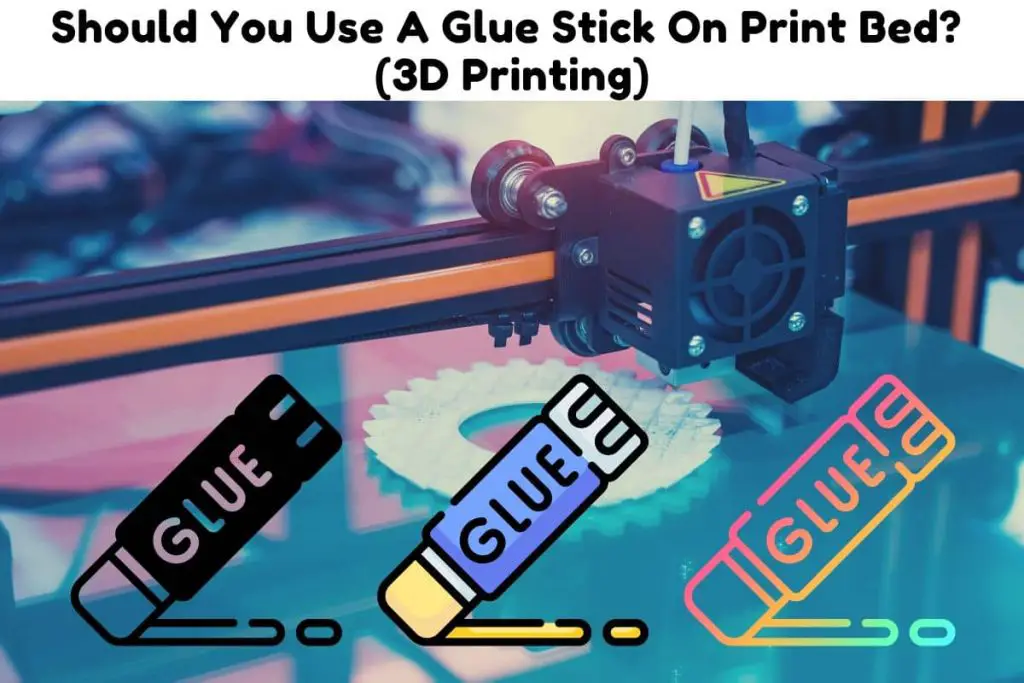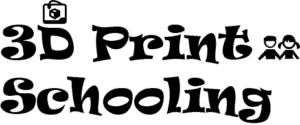If you have been printing for a long time, there is a good chance you have had a print fail due to warping or shifting. These two are among the most common reasons for print failure.
For those new to 3D printing, warping is when the bottom of a print curls off the print bed. Shifting is when the print moves from its original position. In most cases, having one of these happen, means you have to scrap the print.
Warping or shifting can be prevented by improving the bed adhesion of a print bed. But how do you improve the bed adhesion of your prints? In this guide, we evaluate the effectiveness of glue sticks and a few other products or techniques you can use.

Why Do You Need A Glue Stick For 3D Printing?
Poor bed adhesion will cause a 3D print to warp or shift from its starting position on a print bed. Warping or shifting generally results in print failure. Glue sticks are one of several products that can be used to improve the adhesion of 3D prints to a print bed.
On a side note! If you’re looking for a reliable and high-quality 3D printer, we highly recommend the Official Creality Ender 3 V2 Upgraded 3D Printer (Amazon Link).
This printer is an upgraded version of the popular Ender 3 model, with a range of new features and improvements that make it even easier and more convenient to use.

How To Improve Bed Adhesion ?
Before you buy any product to fix a problem it is usually best to make sure the problem is solvable by cheaper means. While glue sticks are inexpensive, there are other fixes you should try first when you experience adhesion problems on your prints.
Clean The Print Bed
This is a simple fix that is very often overlooked. A dirty print bed can just as easily lead to adhesion problems as any other factor. The first thing to check before any print job is making sure your print surface is clean.
This makes sure residue from your last print or other contaminants does not form a substrate that reduces the adhesiveness of the print bed.
Rubbing alcohol is a common product used to clean print beds. Make sure to use a product compatible with the material you are printing. The last thing you would want is for your print to fail because the cleaning agent you used made the print bed less adhesive.
You can also use a paint scraper for harder residue. Use soap and water for grease and other dirt. If you are trying to clean off ABS slurry, use a solvent like acetone. Source
Level The Print Bed
Another common issue is bed leveling. If your print bed is not a consistent distance from your nozzle, you will have poor adhesion on your prints. Your print can stick to one side of the print bed if it is not level.
You always want your nozzle and print bed to be perfectly parallel to each other. This gives you a consistent distance all around. If your printer does not have an automatic sensor for bed leveling, use the paper method.
Here you place a thin sheet of paper between the bed and the nozzle. You then adjust the distance between them until you cannot remove the paper without some friction.
Adjust The Z-Offset
Your filament needs to be firmly pressed into the print bed for it to adhere properly. This will not happen if the nozzle is too far from the print bed. Adjusting the z-offset, reduces or increases the distance between the nozzle and the print bed.
One thing to note is if the z-offset is too small you can create an “elephant foot” because the nozzle is pressing down too hard on the print bed.
These are the main ways to fix bed adhesion without aids. Now let us look at some assisted print bed adhesion methods.
Are There Other Applications for Glue Stick in 3D Printing?
Certain high-temperature filaments like ABS are prone to warping. A glue stick is a simple, cheap solution for firmly fixing a 3D print to a print bed and reducing the chances of warping. Other low-cost solutions include hairspray, tape, and special 3D printing adhesive products like Magigoo.
The main advantages to using either glue sticks, hairspray, or a special adhesive are they are cheap, pair well with most materials, are easy to find, and are easy to use.
Glue sticks provide better adhesion than hairspray but the glue can be harder to remove. The glue does however dissolve in water so you can just wash it off the build plate without the need for scraping or solvent.
How To Use A Glue Stick For 3D Printing?
Assuming you’ve already made your print bed preparations, (cleaning, leveling, and adjusting) these are the steps you would follow:
- Use a heated printed bed as you normally would.
- Spread a thin layer of glue either to the area that will be taken up by the print or to the entire print bed.
- Wash the glue off with warm water when done printing.
You do not have to reapply glue every time you print. You can print between 5 to 10 prints without having to reapply glue for a new print.
Can You Use A Glue Stick On PLA?
PLA does not suffer from poor bed adhesion as much as other materials like ABS. For instance, it is possible to print without a heated bed when printing PLA. If however, a PLA print shows poor adhesion, aids like a heated bed or a glue stick can be used to improve adhesion.
PLA has a low melting temperature which makes it a much easier material to work with. This is partly why you will not have as much trouble with bed adhesion when printing PLA. Stronger types of PLA like PLA Plus may require aids like a glue stick or blue tape to improve their stickiness.
Which Glue to use to Join 3D Printed Parts ?
Super glue is one of the most commonly used products for joining 3D parts. The downside to using glue is it does not bond well with certain filaments like flexible TPU for example. An alternative way to join such a material would be welding or joinery.
Welding plastics is similar to welding metals. You can weld pieces together using filament and a 3D pen or a soldering iron if you do not have one. For more on this, check out our post ” Can You Splice 3D Printer Filament? How To Join 3D Filaments!“
You can also use connectors or joints. There are different types of joints used in woodworking that can be applied to 3D printing as well. These include hinges, pins, snap fits, and dovetails.
